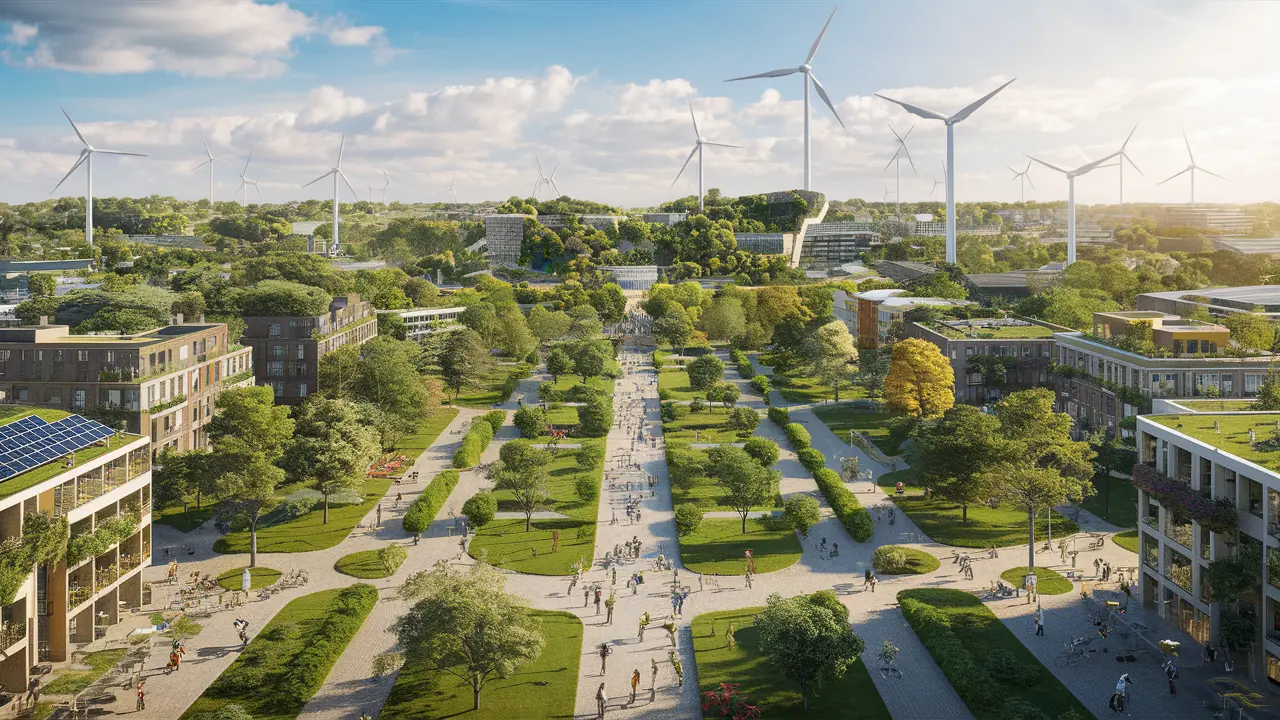Sustainable urban planning focuses on creating cities that prioritize environmental, social, and economic sustainability. Here are key strategies and principles for creating green cities through sustainable urban planning:
- Mixed-Use and Compact Development: Encourage mixed-use zoning that integrates residential, commercial, and recreational spaces within walkable distances. Compact development reduces sprawl, promotes efficient land use, and reduces the need for long commutes.
- Green Building Standards: Implement strict green building codes and standards to promote energy efficiency, water conservation, and use of sustainable materials in new construction and renovations. This includes certifications like LEED (Leadership in Energy and Environmental Design) and passive house standards.
- Public Transportation and Active Mobility: Invest in and prioritize public transportation systems such as buses, trams, and metro lines. Develop pedestrian and cycling infrastructure with dedicated lanes and bike-sharing programs to reduce reliance on cars and encourage active mobility.
- Green Spaces and Urban Greening: Preserve and create green spaces such as parks, urban forests, and community gardens. These areas help improve air quality, regulate urban temperatures, promote biodiversity, and provide recreational opportunities for residents.
- Renewable Energy Integration: Incorporate renewable energy sources such as solar, wind, and geothermal energy into urban infrastructure. Install solar panels on rooftops, integrate wind turbines in suitable locations, and explore district heating and cooling systems powered by renewable energy.
- Water Management and Conservation: Implement sustainable water management practices, including rainwater harvesting, greywater recycling, and efficient irrigation systems in public spaces and residential developments. Promote water conservation through education and incentives.
- Waste Management and Recycling: Establish comprehensive waste management systems that prioritize reduction, recycling, and composting. Encourage waste reduction at the source, promote recycling programs, and support initiatives for sustainable waste disposal and treatment.
- Community Engagement and Participation: Involve residents, businesses, and stakeholders in the planning and decision-making process. Foster community engagement through public consultations, participatory design workshops, and awareness campaigns on sustainable practices.
- Resilience and Adaptation: Design cities with climate resilience in mind, considering risks such as extreme weather events and rising sea levels. Incorporate green infrastructure like permeable pavements, green roofs, and bioswales to manage stormwater and reduce urban heat island effects.
- Economic Viability and Social Equity: Ensure that sustainable urban planning initiatives promote economic growth, job creation, and social equity. Address issues of affordable housing, access to essential services, and equitable distribution of green spaces and amenities across neighborhoods.
- Monitoring and Evaluation: Establish mechanisms to monitor and evaluate the effectiveness of sustainable urban planning strategies. Use data and indicators to track progress towards sustainability goals, identify areas for improvement, and adapt strategies as needed.
By integrating these principles into urban planning and development processes, cities can become more resilient, livable, and sustainable environments for current and future generations. Sustainable urban planning not only benefits the environment but also enhances quality of life, promotes health and well-being, and fosters inclusive economic growth.


The designer must be an interpreter, and real and virtual needs must anticipate those questions of people that they do not think, and suddenly opened in the already created objects. I want to create beautiful things, even if it’s not necessary for anyone, as a fight against ugly things. This is my intention.
Fast, cheap and good — from these three things you should always choose two. If it’s fast and cheap, it will never be good. If it’s cheap and good, it will never work out quickly. And if it is good and fast, it will never come cheap. But remember: of the three you still have to always choose two.